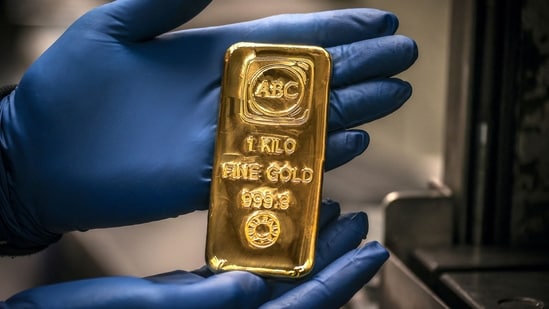Gold Exchange-Traded Funds, or Gold ETFs, offer a smart and secure way to invest in gold without holding it physically. Traded on the stock exchanges, they mirror gold prices and provide liquidity, transparency, and tax efficiency—making them ideal for investors seeking a modern alternative to physical gold or sovereign gold bonds.
Gold ETFs offer a modern, secure, and liquid way to invest in gold—ideal for investors who want exposure to bullion without the hassle of physical storage. They combine the safety of gold with the efficiency of market trading, making them a useful component in a diversified investment portfolio.
As India’s gold appetite increasingly shifts from lockers to the cloud, Gold ETFs stand out as a bridge between tradition and technology.
What is a Gold ETF?
A Gold ETF is a type of mutual fund that tracks the domestic price of physical gold. It is traded on stock exchanges—just like shares of a company—and allows investors to gain exposure to gold without actually owning the metal in physical form.
Each unit of a Gold ETF typically represents 1 gram of gold (though this can vary by fund). The fund holds physical gold in the form of bullion or standard bars, stored in secure vaults, and its value fluctuates in line with gold prices.
In short, Gold ETFs are a fusion of gold investing and stock market convenience—offering the ability to buy, sell, or hold gold digitally through a demat account.
How Gold ETFs work
When you buy a unit of a Gold ETF, the asset management company buys an equivalent quantity of physical gold and stores it with an authorised custodian.
Gold ETFs are passive investment instruments, meaning they simply mirror the price movement of gold and don’t try to outperform it. Their performance depends on two main factors:
- International gold prices
- The rupee-dollar exchange rate
While physical gold is globally priced in US dollars, the Gold ETFs are traded on stock exchanges like NSE and BSE where investors can buy or sell them through brokers using their demat and trading accounts.
Benefits of investing in Gold ETFs
1. Purity and Transparency: Since Gold ETFs are backed by 99.5% pure gold, investors avoid concerns of adulteration or impurities associated with physical purchases.
2. Liquidity: Units can be sold anytime on the stock exchange at prevailing market prices, unlike physical gold, which may involve making charges and resale discounts.
3. Lower costs: Gold ETFs do not incur storage, insurance, or making charges. Expense ratios are typically between 0.5-1% annually, far lower than the implicit costs in physical gold.
4. Tax Efficiency: Gold ETFs are treated as non-equity mutual funds for taxation purposes. Long-term capital gains after three years are taxed at 20% with indexation benefits. Short-term gains are added to one’s income and taxed as per slab rates.
5. No GST on Purchase: Unlike buying jewellery or bars, there’s no 3% GST on buying Gold ETFs.
How to invest in Gold ETFs
1. Open a Demat and trading account: You need accounts with a SEBI-registered broker.
2. Select a Gold ETF: Major options include Nippon India Gold ETF, HDFC Gold ETF, SBI Gold ETF, Axis Gold ETF, among others.
3. Buy on Exchange: Purchase units through your broker’s platform, similar to buying shares.
4. Track performance: The Net Asset Value (NAV) of the ETF reflects the real-time market price of gold.
5. Redeem Anytime: Sell units on the exchange anytime during market hours.
Gold ETFs Risks
While Gold ETFs are convenient and cost-efficient, they are not risk-free:
1. Price volatility: Gold prices fluctuate based on global cues, central bank actions, and geopolitical events.
2. Tracking error: Small deviations can occur between the ETF’s NAV and the actual gold price due to fund expenses or timing differences.
3. No interest income: Unlike soveireign gold bonds or fixed deposits, Gold ETFs do not pay interest.
Gold ETFs are best suited for investors looking for short- to medium-term exposure to gold, or as a hedge against inflation and market uncertainty.
